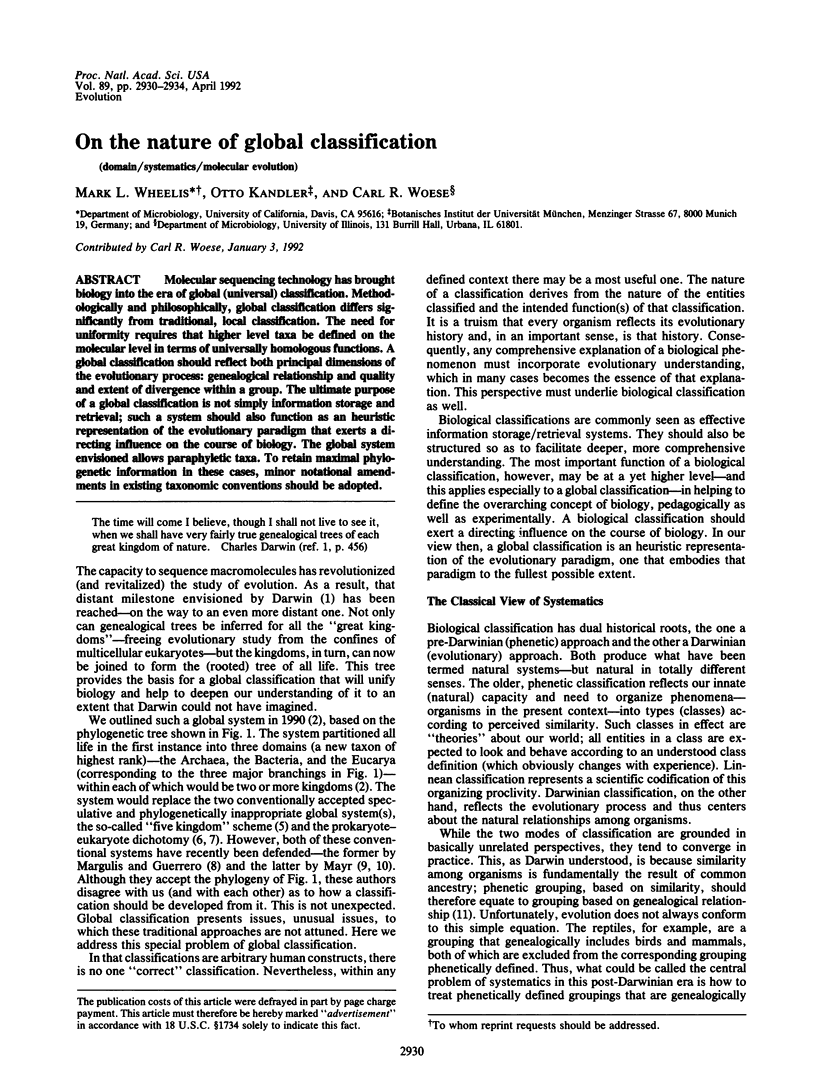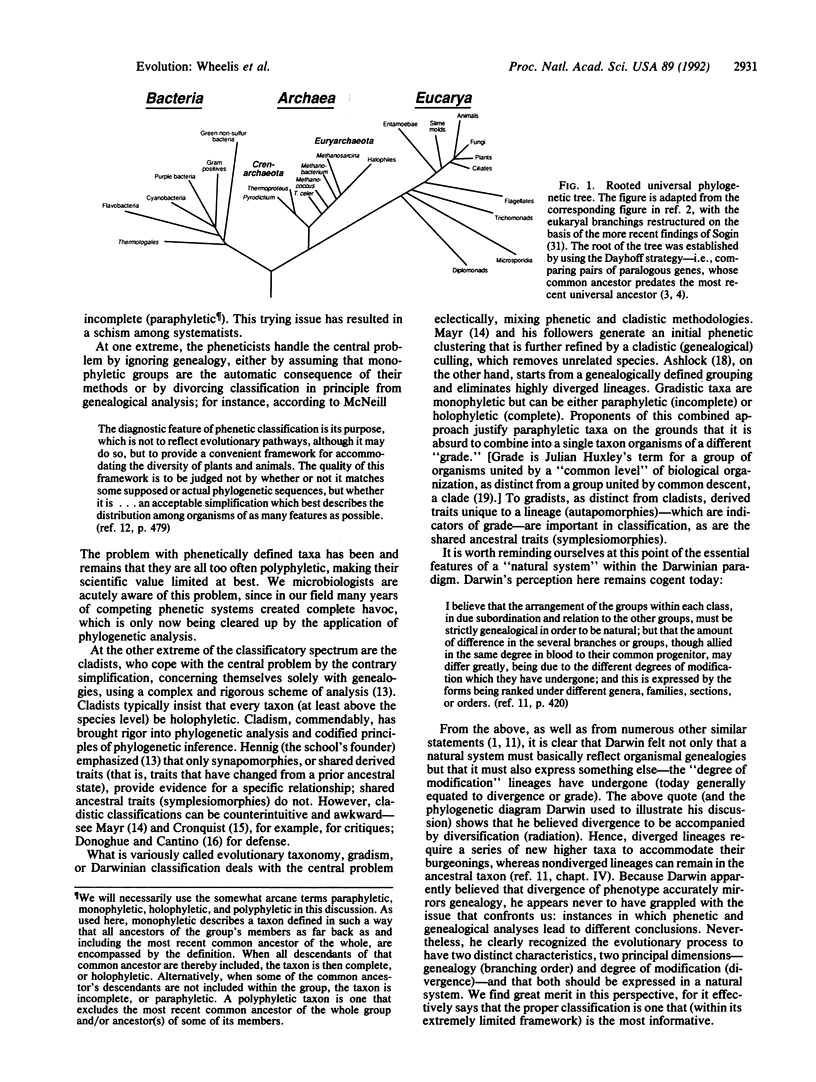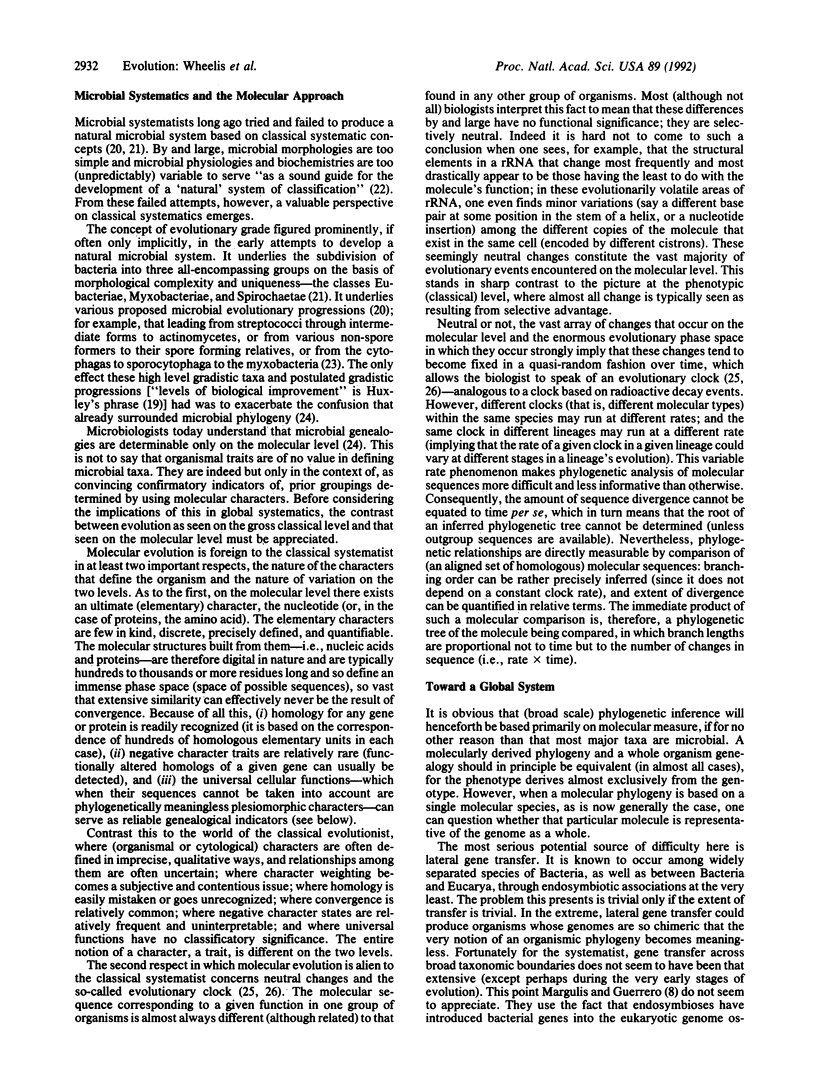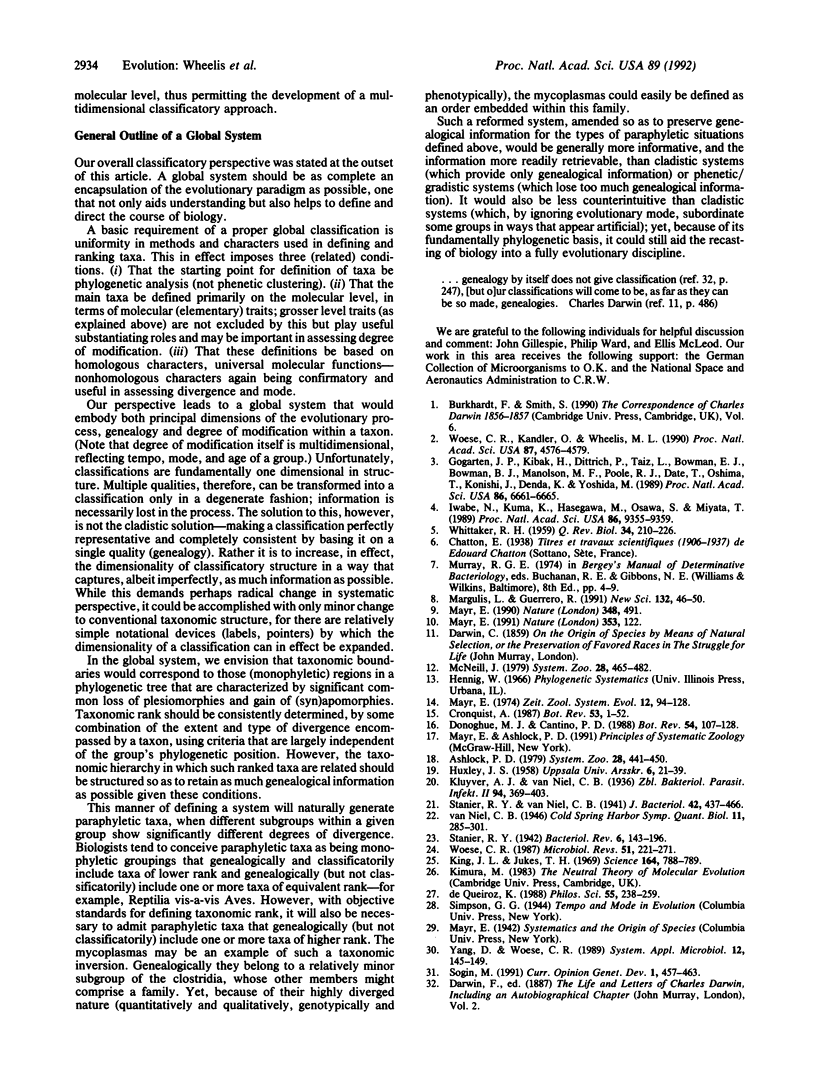Abstract
Molecular sequencing technology has brought biology into the era of global (universal) classification. Methodologically and philosophically, global classification differs significantly from traditional, local classificagtion. The need for uniformity requires that higher level taxa be defined on the molecular level in terms of universally homologous functions. A global classification should reflect both principal dimentions of the evolutionary process: genealogical relationship and quality and extent of divergence within a group. The ultimate purpose of a global classification is not simply information storage and retrieval; such a system should also as an heuristic representation of the evolutionary paradigm that exerts a directing influence on the course of biology. The global system envisioned allows paraphyletic taxa. To retain maximal phylogenetic information in these cases, minor notational amendments in existing taxonomic conventions should be adopted.
Keywords: domain, systematics, molecular evolution
Full text
PDF




Selected References
These references are in PubMed. This may not be the complete list of references from this article.
- Gogarten J. P., Kibak H., Dittrich P., Taiz L., Bowman E. J., Bowman B. J., Manolson M. F., Poole R. J., Date T., Oshima T. Evolution of the vacuolar H+-ATPase: implications for the origin of eukaryotes. Proc Natl Acad Sci U S A. 1989 Sep;86(17):6661–6665. doi: 10.1073/pnas.86.17.6661. [DOI] [PMC free article] [PubMed] [Google Scholar]
- Holliday R. Ambidextrous RNA. Nature. 1990 Dec 6;348(6301):491–492. doi: 10.1038/348491b0. [DOI] [PubMed] [Google Scholar]
- Iwabe N., Kuma K., Hasegawa M., Osawa S., Miyata T. Evolutionary relationship of archaebacteria, eubacteria, and eukaryotes inferred from phylogenetic trees of duplicated genes. Proc Natl Acad Sci U S A. 1989 Dec;86(23):9355–9359. doi: 10.1073/pnas.86.23.9355. [DOI] [PMC free article] [PubMed] [Google Scholar]
- King J. L., Jukes T. H. Non-Darwinian evolution. Science. 1969 May 16;164(3881):788–798. doi: 10.1126/science.164.3881.788. [DOI] [PubMed] [Google Scholar]
- Margulis L., Guerrero R. Kingdoms in turmoil. New Sci. 1991 Mar 23;1761:46–50. [PubMed] [Google Scholar]
- Sogin M. L. Early evolution and the origin of eukaryotes. Curr Opin Genet Dev. 1991 Dec;1(4):457–463. doi: 10.1016/s0959-437x(05)80192-3. [DOI] [PubMed] [Google Scholar]
- Stanier R. Y. THE CYTOPHAGA GROUP: A CONTRIBUTION TO THE BIOLOGY OF MYXOBACTERIA. Bacteriol Rev. 1942 Sep;6(3):143–196. doi: 10.1128/br.6.3.143-196.1942. [DOI] [PMC free article] [PubMed] [Google Scholar]
- Stanier R. Y., Van Niel C. B. The Main Outlines of Bacterial Classification. J Bacteriol. 1941 Oct;42(4):437–466. doi: 10.1128/jb.42.4.437-466.1941. [DOI] [PMC free article] [PubMed] [Google Scholar]
- WHITTAKER R. H. On the broad classification of organisms. Q Rev Biol. 1959 Sep;34:210–226. doi: 10.1086/402733. [DOI] [PubMed] [Google Scholar]
- Woese C. R. Bacterial evolution. Microbiol Rev. 1987 Jun;51(2):221–271. doi: 10.1128/mr.51.2.221-271.1987. [DOI] [PMC free article] [PubMed] [Google Scholar]
- Woese C. R., Kandler O., Wheelis M. L. Towards a natural system of organisms: proposal for the domains Archaea, Bacteria, and Eucarya. Proc Natl Acad Sci U S A. 1990 Jun;87(12):4576–4579. doi: 10.1073/pnas.87.12.4576. [DOI] [PMC free article] [PubMed] [Google Scholar]


